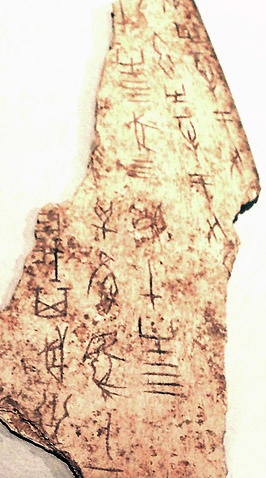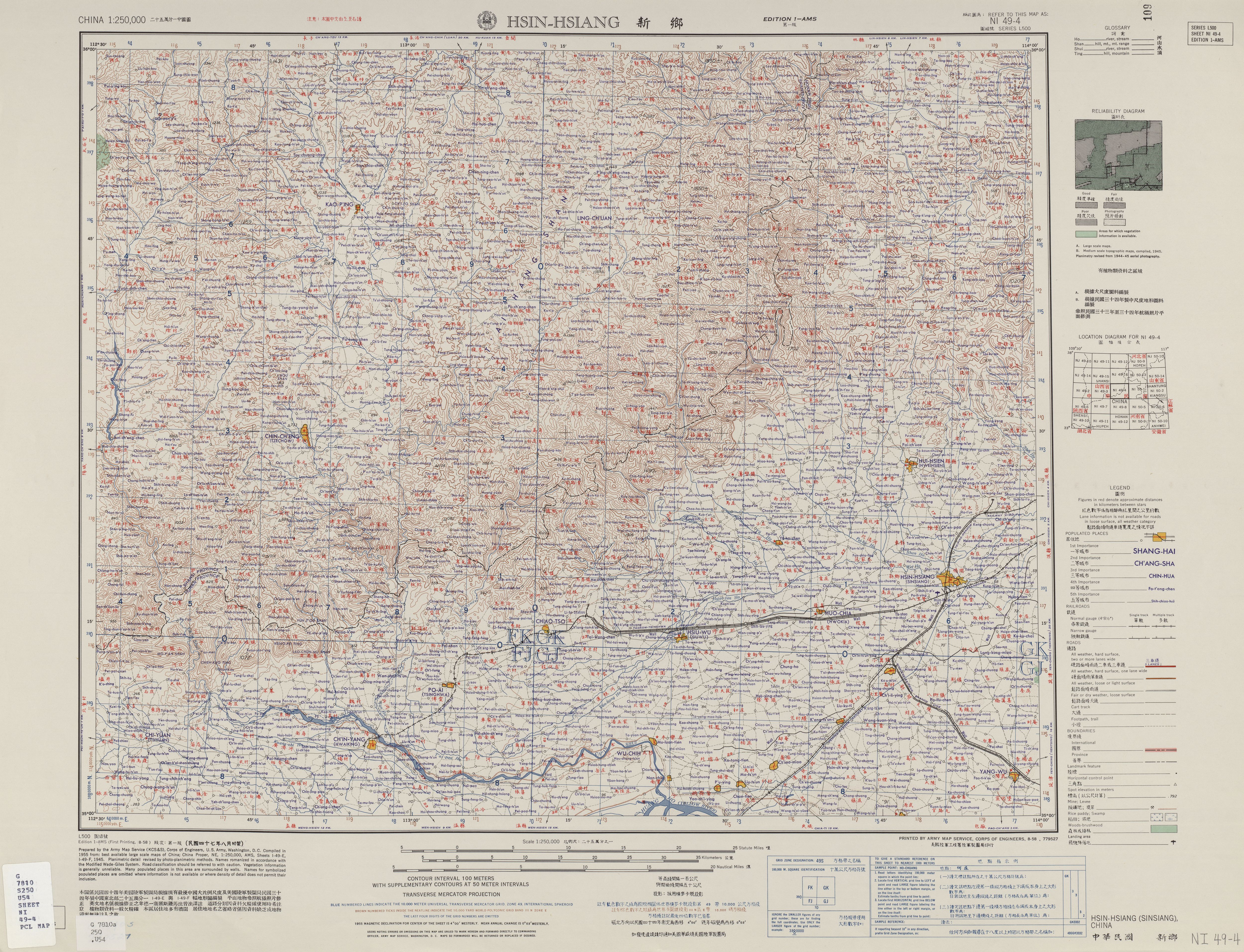|
Anyang
Anyang ( zh, s=安阳, t=安陽; ) is a prefecture-level city in Henan, China. Geographical coordinates are 35° 41'~ 36° 21' north latitude and 113° 38'~ 114° 59' east longitude. The northernmost city in Henan, Anyang borders Puyang to the east, Hebi and Xinxiang to the south, and the provinces of Shanxi and Hebei to its west and north respectively. Anyang had a total population of 5,477,614 as of the 2020 Chinese census, 2020 census, 2,675,523 of whom lived in the built-up (or metro) area made of four urban districts and Anyang and Tangyin counties, now largely agglomerated with the city proper. Anyang is the location of the ancient city of Yinxu, Yin, which was the capital of the Shang dynasty and the first stable capital of China. As the ancient capital of the Seven Dynasties and one of the birthplaces of Chinese civilization, Anyang is rich in historical and cultural resources and has a number of world-class and national historical sites. At the end of 1986, it was recogniz ... [...More Info...] [...Related Items...] OR: [Wikipedia] [Google] [Baidu] |
Shang Dynasty
The Shang dynasty (), also known as the Yin dynasty (), was a Chinese royal dynasty that ruled in the Yellow River valley during the second millennium BC, traditionally succeeding the Xia dynasty and followed by the Western Zhou dynasty. The classic account of the Shang comes from texts such as the '' Book of Documents'', '' Bamboo Annals'' and '' Shiji''. Modern scholarship dates the dynasty between the 16th and 11th centuries BC, with more agreement surrounding the end date than beginning date. The Shang dynasty is the earliest dynasty within traditional Chinese history that is firmly supported by archaeological evidence. The archaeological site of Yinxu, near modern-day Anyang, corresponds to the final Shang capital of Yin. Excavations at Yinxu have revealed eleven major royal tombs, the foundations of former palace buildings, and the remains of both animals and humans that were sacrificed in official state rituals. Tens of thousands of bronze, jade, ... [...More Info...] [...Related Items...] OR: [Wikipedia] [Google] [Baidu] |
Henan
Henan; alternatively Honan is a province in Central China. Henan is home to many heritage sites, including Yinxu, the ruins of the final capital of the Shang dynasty () and the Shaolin Temple. Four of the historical capitals of China, Luoyang, Anyang, Kaifeng and Zhengzhou, are in Henan. While the province's name means 'south of the river', approximately a quarter of the province lies north of the Yellow River. With an area of , Henan covers a large part of the fertile and densely populated North China Plain. Its neighboring provinces are Shaanxi, Shanxi, Hebei, Shandong, Anhui, and Hubei. Henan is China's third-most populous province and the most populous among inland provinces, with a population of over 99 million as of 2020. It is also the world's seventh-most populous administrative division; if it were a country by itself, Henan would be the 17th-most populous in the world, behind Egypt and Vietnam. People from Henan often suffer from regional discrimination ... [...More Info...] [...Related Items...] OR: [Wikipedia] [Google] [Baidu] |
Wenfeng District
Wenfeng District () is a district in Anyang, Henan province, China. Administrative divisions As of 2021, this district is divided to 12 subdistricts, 1 town A town is a type of a human settlement, generally larger than a village but smaller than a city. The criteria for distinguishing a town vary globally, often depending on factors such as population size, economic character, administrative stat ... and 1 township. ;Subdistricts ;Towns * Baoliansi Town () ;Townships * Gaozhuang Township () Notable events 2022 Anyang factory fire (in Baoliansi Town, Wenfeng District, Anyang). References County-level divisions of Henan {{Henan-geo-stub ... [...More Info...] [...Related Items...] OR: [Wikipedia] [Google] [Baidu] |
Yinxu
Yinxu (; ) is a Chinese archeological site corresponding to Yin, the final capital of the Shang dynasty (). Located in present-day Anyang, Henan, Yin served as the capital during the Late Shang period () which spanned the reigns of 12 Shang kings and saw the emergence of oracle bone script, the earliest known Chinese writing. Along with oracle bone script and other material evidence for the Shang's existence, the site was forgotten for millennia. Its rediscovery in 1899 resulted from an investigation into oracle bones that were discovered being sold nearby. The rediscovery of Yinxu marked the beginning of decades of intensive excavation and study. It is one of China's oldest and largest archeological sites, and was selected by UNESCO as a World Heritage Site in 2006. Yinxu is located in northern Henan, near modern Anyang and the borders Henan shares with Hebei and Shanxi. Public access to the site is permitted. Traditional history According to the 2nd century ''Shuowen Jiezi'' ... [...More Info...] [...Related Items...] OR: [Wikipedia] [Google] [Baidu] |
Wu Ding
Wu Ding (; died ); personal name (), was a king of the Chinese Shang dynasty who ruled the central Yellow River valley. He is the earliest figure in Chinese history mentioned in contemporary records. The annals of the Shang dynasty compiled by later historians were once thought to be little more than legends until oracle script inscriptions on bones dating from his reign were unearthed at the ruins of his capital Yin (near modern Anyang) in 1899. Oracle bone inscriptions from his reign have been radiocarbon dated to 1254–1197 BC ±10 years, closely according with regnal dates derived by modern scholars from received texts, epigraphic evidence, and astronomical calculations. Wu Ding's reign is characterized by a prosperous period of the late Shang state, with a wide network of allies and subordinates. The first inscriptions unequivocally recognized as Chinese appeared during his reign, together with new technological innovations. More than half of Shang inscriptions date to his ... [...More Info...] [...Related Items...] OR: [Wikipedia] [Google] [Baidu] |
Huan River
The Huan River (), or Anyang River (), is a river in Henan, China, and part of the Hai River basin. The river rises north of Linzhou, Henan, Linzhou in northwestern Henan, and joins the Wei River (Shandong), Wei River near Neihuang County, Neihuang in the northeast of the province. The site of Yinxu, in the village of Xiaotun within present-day Anyang on the south bank of the river, has been identified as the last capital of the Shang dynasty, occupied between the 13th and 11th centuries BCE. A walled city and palace complex at Huanbei on the north bank, occupied in the second half of the 14th century BCE, was destroyed at the time Yinxu was built. The river's name, Huan 洹, has been in use for more than 3,000 years. The character was recorded on both Shang-era oracle bones and bronze vessels. Notes Bibliography * * Rivers of Henan Anyang {{China-river-stub ... [...More Info...] [...Related Items...] OR: [Wikipedia] [Google] [Baidu] |
Xinxiang
Xinxiang ( zh, s= , t= , p=Xīnxiāng ; Postal romanization, postal: Sinsiang) is a prefecture-level city in northern Henan provinces of China, province, China. It borders the provincial capital of Zhengzhou to its southwest, Kaifeng to its southeast, Hebi and Anyang to its north, Jiaozuo to its west, and the provinces of Shanxi and Shandong to its northwest and east respectively. Its total population was 6,251,929 as of the 2020 Chinese census, 2020 Chinese Census. As of the 2018 estimation, 2,743,200 lived in the built-up (or metro) area made of 4 urban districts (''Weibin District, Xinxiang, Weibin, Hongqi District, Hongqi, Muye, Fengquan District, Fenquan''), Yanjin County, Henan, Yanjin county, Xinxiang county and Huixian, Huixian City which are now being Conurbation, conurbated as the city is expanding very quickly. Xinxiang is an industrial city in northern Henan, an important city on the Beijing–Guangzhou railway, Beijing-Guangzhou Railway and a city in the Central Pl ... [...More Info...] [...Related Items...] OR: [Wikipedia] [Google] [Baidu] |
Capitals Of China
This is a list of historical capitals of China. Four Great Ancient Capitals There are traditionally four major historical capitals of China referred to as the "Four Great Ancient Capitals of China" (). The four are Beijing, Nanjing, Luoyang and Xi'an (Chang'an). List of historical capitals of China :''Sorted in alphabetical order'' * Acheng District of the city of Harbin was the capital of the Jin dynasty from 1115 to 1153. It was called Shangjing () or Huining Prefecture at the time. It was destroyed in 1157 and reestablished as a secondary capital in 1173. * Anyang was the capital of the Shang dynasty (1600 BC – 1046 BC) at its peak. It was called Yin () by the Zhou. * Balasagun in modern Kyrgyzstan was the capital of the Western Liao dynasty from 1134 to 1218. * Beijing (also romanized Peking), literally meaning "Northern Capital", previously also known as Beiping, was the capital of various dynasties and regional regimes, including: ::* The state of Yan (11th century B ... [...More Info...] [...Related Items...] OR: [Wikipedia] [Google] [Baidu] |
Hebi
Hebi ( zh, s=, t=, p=Hèbì ; postal: Hopi) is a prefecture-level city in northern Henan province, China. Situated in mountainous terrain at the edge of the Shanxi plateau, Hebi is about south of Anyang, northeast of Xinxiang and north of Kaifeng. As of the 2020 census, its population was 1,565,973 inhabitants and in the 2018 estimate 574,000 lived in the built-up (or metro) area made of Qibin District and Qi County largely conurbated. One can notice that Shancheng District and Heshan District are for the moment, part of another built-up area of 372,600 inhabitants close to Anyang. Hebi has several coal mines. The city is also home to Hebi New Area, an economic development zone. Administration The prefecture-level city of Hebi administers 3 districts and 2 counties. * Qibin District () * Shancheng District () * Heshan District () * Xun County () * Qi County () Climate History The name of "Hebi" first appears in book "''History of Jin The ''History of Jin'' ... [...More Info...] [...Related Items...] OR: [Wikipedia] [Google] [Baidu] |
License Plate (China)
Vehicle registration plates in China are mandatory metal or plastic plates attached to motor vehicles in mainland China for official identification purposes. The vehicle registration plate, plates are issued by the local traffic management offices, which are sub-branches of local public security bureaus, under the rules of the Ministry of Public Security (China), Ministry of Public Security. Hong Kong and Macau, both of which are special administrative regions of China, issue their own licence plates, a legacy of when they were under British Hong Kong, British and Portuguese Macau, Portuguese administration. Vehicles from Hong Kong and Macau are required to apply for licence plates, usually from Guangdong province, to travel on roads in mainland China. Vehicles from mainland China have to apply for Vehicle registration plates of Hong Kong, Hong Kong licence plates or Vehicle registration plates of Macau, Macau licence plates to enter those territories. The font used are in the ... [...More Info...] [...Related Items...] OR: [Wikipedia] [Google] [Baidu] |







